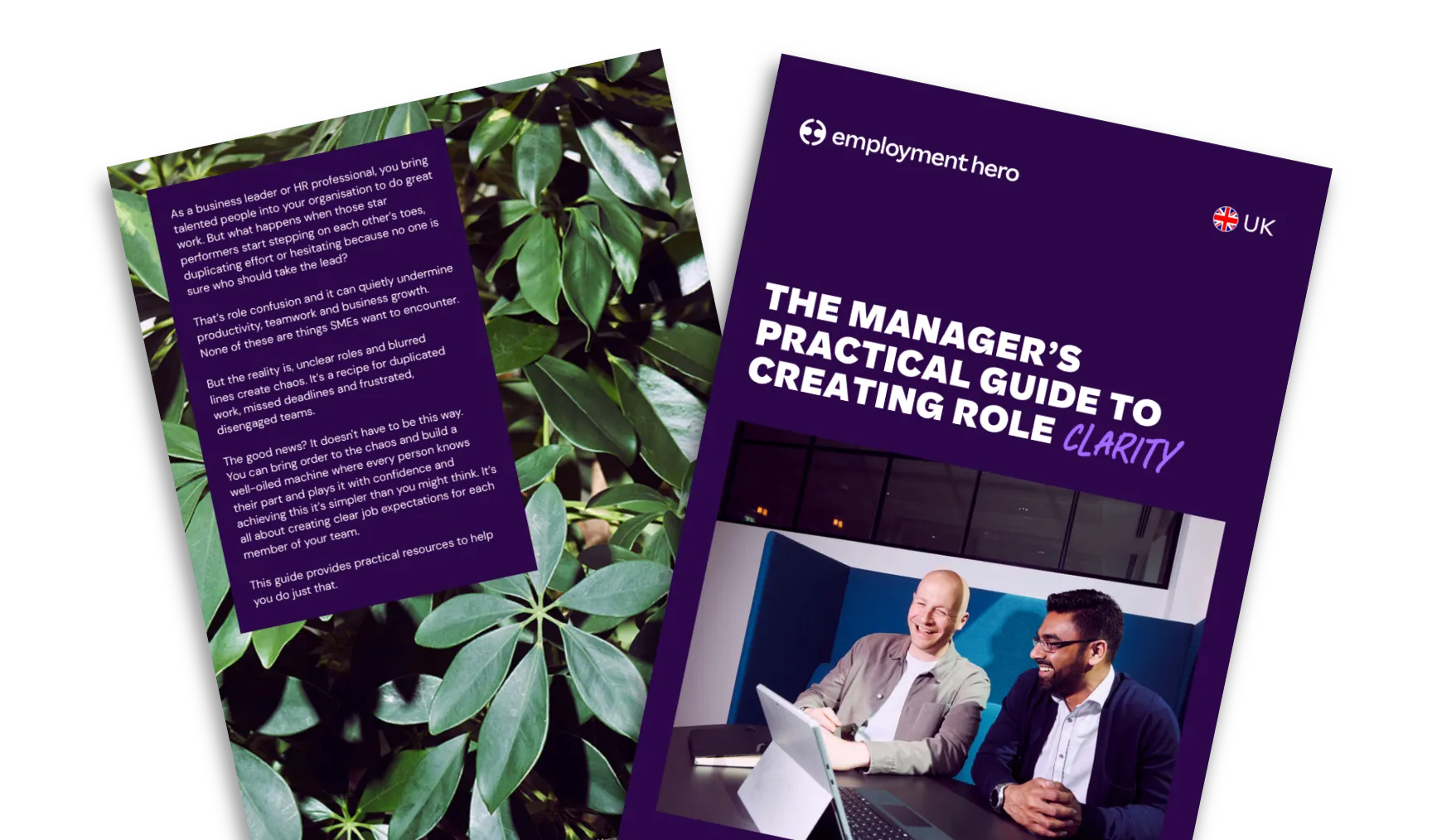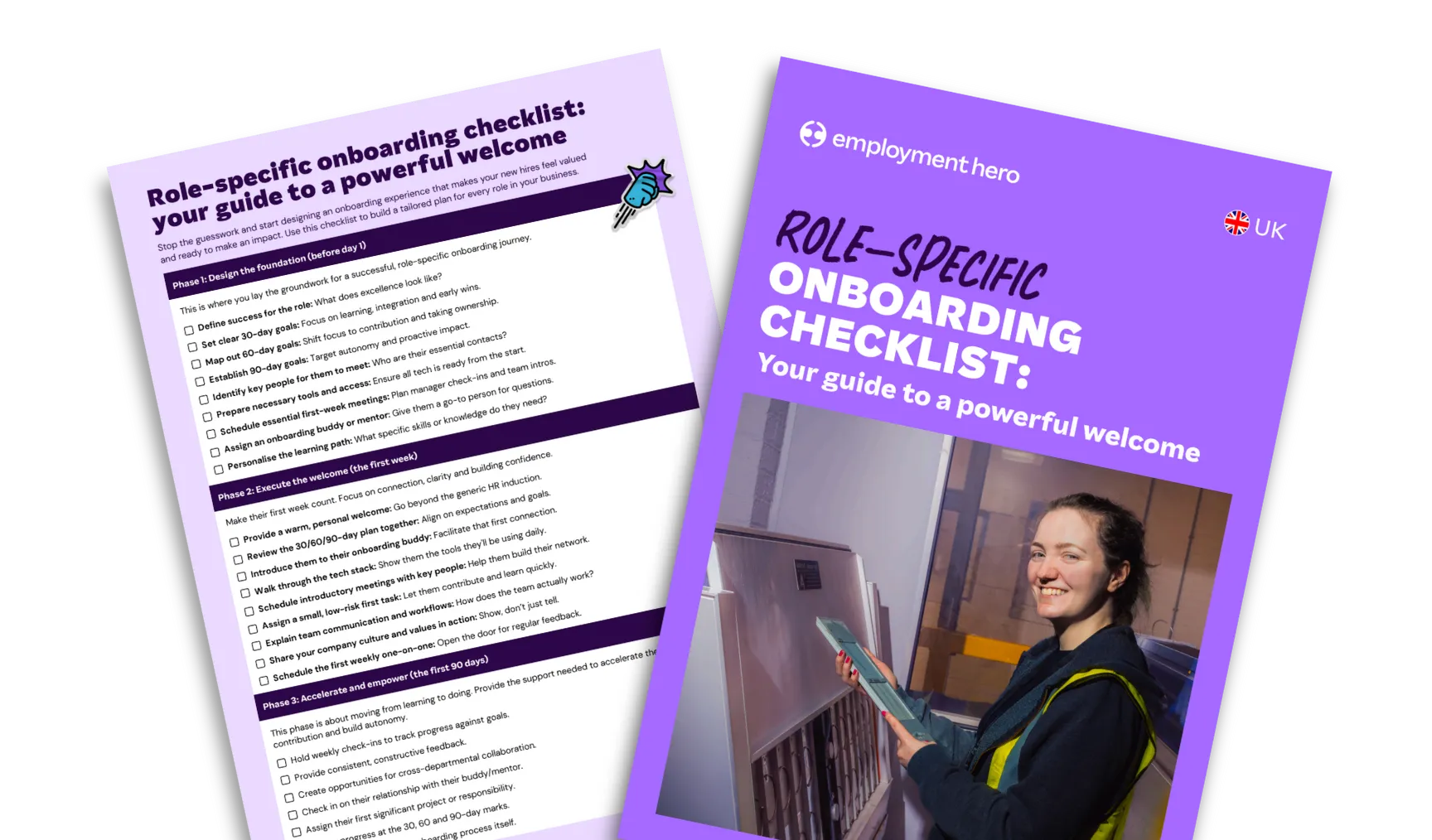An Employers Guide to Successful Mentoring in the Workplace
Published
An Employers Guide to Successful Mentoring in the Workplace
Published
Great talent doesn’t grow by accident, it’s nurtured through connection, guidance and opportunity. In today’s fast-paced workplace, people want more than training; they want meaningful development that helps them grow, lead and stay inspired.
That’s where mentoring in the workplace comes in. A well-designed programme unlocks the collective knowledge within your business, helping your rising stars learn directly from your most experienced team members. It builds confidence, strengthens relationships and creates a culture where growth is shared,not siloed.
It’s time to turn potential into progress through mentoring in the workplace. Let’s dive in.
What is mentoring in the workplace?
Mentoring in the workplace is a structured relationship that connects a more experienced employee (the mentor) with a less experienced employee (the mentee) to support personal and professional growth.
Now, most people have been in situations where they have an informal chat over a coffee with a senior colleague and thought that was coaching. But mentoring in the workplace is far more than that. A formal programme provides a framework for sharing knowledge, developing skills and navigating career paths within your organisation.
For the mentee, it’s a direct line to wisdom and experience. For the mentor, it’s a chance to develop leadership skills and give back. For the business, it’s a powerful strategy for improving employee retention, building a stronger leadership pipeline and fostering a culture of continuous learning.
Types of mentorship programmes
There’s no one-size-fits-all approach to mentoring in the workplace. The best programme is the one that aligns with your goals, your culture and your people. Here are some common models to consider:
- One-to-one: The classic model. One experienced mentor is paired with one mentee for a dedicated, personal development journey.
- Group: One mentor works with a small group of mentees. This is an efficient way to share knowledge and allows mentees to learn from each other’s experiences.
- Peer: Employees at a similar level or in similar roles mentor each other. This is great for building cross-departmental relationships and sharing practical, role-specific advice.
- Reverse: This flips the traditional model on its head. A junior employee mentors a senior leader, typically on topics like technology, social media, or a younger generation’s perspective. It’s a powerful way to bridge generational gaps and keep your leadership team current. Learn more about how a reverse mentoring programme can benefit your business.
What makes mentoring at work successful?
A successful mentoring at work programme doesn’t just happen, it’s built with purpose. The most impactful initiatives are grounded in clarity, commitment and measurable goals. Successful coaching goes beyond good intentions; it relies on a structured approach that ensures every connection leads to real growth and results.
- Defined goals: The program must have a clear business objective. Are you trying to improve retention for a specific team? Develop future leaders? Improve diversity in senior roles? Start with the “why.”
- Clear roles and responsibilities: Both mentors and mentees must understand what is expected of them, including time commitment, confidentiality, and their specific roles in the relationship.
- A solid matching process: Pairing the right mentor with the right mentee is critical. The best matches are based not just on skills and experience, but also on personality and communication styles.
- Measurable outcomes: You need to know if the program is working. Success should be measured against the initial goals, using metrics like promotion rates, employee engagement scores, and retention data.
What are the 4 C’s of mentorship?
Every successful coaching relationship is built on four core principles, known as the 4 C’s. These pillars create the foundation for trust, growth and genuine connection between mentors and mentees.
Communication
This is the foundation. Mentoring relationships thrive on open, honest, and regular communication. It’s about creating a safe space for the mentee to ask questions, share challenges, and be vulnerable without fear of judgment.
Connection
A true mentoring relationship goes beyond a simple transfer of knowledge. It requires a genuine human connection. Mentors and mentees must build rapport and trust for the relationship to be effective.
Clarity
Both parties need clarity on the purpose of the relationship. What are the mentee’s specific development goals? What can the mentor realistically offer? Setting clear expectations from the outset prevents misunderstanding and ensures the partnership stays focused.
Commitment
Mentoring requires a real commitment of time and energy from both the mentor and the mentee. It’s not a tick-box exercise. Both individuals must be invested in the process and dedicated to following through on their responsibilities.
How to build an effective mentoring programme in five steps
Creating a mentoring programme that truly makes an impact starts with a clear plan. Whether you’re launching your first initiative or refining an existing one, these five steps will help you design a structured, high-impact program that drives real growth across your organisation.
Step 1: Define your objectives and get buy-in
Before you do anything else, define what you want to achieve. Are you aiming to increase the promotion rate of female employees? Reduce turnover among new hires in their first year? Improve leadership skills in middle management? Your objective must be specific and measurable. Once you have your goal, create a business case and secure buy-in from your senior leadership team. Their visible support is crucial for the program’s success.
Step 2: Recruit and match mentors and mentees
Launch an internal campaign to recruit both mentors and mentees. Be clear about the benefits and the time commitment involved. Once you have your pool of participants, the matching process begins. Use applications to gather information on skills, career goals, and personality. While you can match based on department and seniority, consider using a short “chemistry check” meeting to allow potential pairs to see if they click before finalising the match.
Step 3: Provide training and resources
Don’t assume your people know how to be effective mentors or mentees. Host a kickoff workshop to train participants. For mentors, cover topics like active listening, giving constructive feedback, and how to coach employees in the workplace. For mentees, focus on how to drive the relationship, set clear goals, and be receptive to feedback. Provide everyone with a handbook that outlines the program structure, roles, and key milestones.
Step 4: Launch the program and set a timeline
Officially launch the program. The structure should guide the relationship without being overly rigid. A typical program runs for 6-12 months. Encourage pairs to meet at least once a month. The first meeting should be dedicated to setting specific, measurable goals using a professional development plan template.
Step 5: Monitor progress and gather feedback
Check in regularly with both mentors and mentees. Use short pulse surveys to gauge satisfaction and identify any issues early on. Are pairs meeting regularly? Are the mentees making progress toward their goals? This ongoing monitoring allows you to make real-time adjustments and provide support where needed.
How to structure a mentorship programme
A formal structure provides the guardrails that keep a mentorship program on track. Here’s a detailed structure you can adapt:
- Phase 1: Foundation (month 1): The first month is about building rapport and setting goals.
- Kickoff workshop: A mandatory session for all participants.
- First meeting: The mentor and mentee get to know each other and use a template to define 2-3 specific development goals for the program.
- Agreement: The pair signs a simple mentoring agreement outlining their commitment, confidentiality, and meeting schedule.
- Phase 2: Development (months 2-5): This is the core of the program, focused on working towards the mentee’s goals.
- Monthly meetings: Regular, structured meetings focused on progress and challenges.
- Mid-point check-in: A formal review at the halfway mark to assess progress and adjust goals if needed.
- Phase 3: Evaluation and wrap-up (month 6): The final phase focuses on reflection and planning for the future.
- Final meeting: The pair reviews the mentee’s progress against their initial goals and discusses next steps for continued development.
- Program feedback: Both mentor and mentee provide feedback on the program through a final survey. This data is essential for measuring ROI.
Measuring success and ROI of mentoring programs
To justify its existence, your program must demonstrate a return on investment. Success isn’t just about happy participants; it’s about tangible business results. You can measure success through a combination of qualitative and quantitative data:
- Engagement and satisfaction: Use pulse surveys throughout the program to measure participant satisfaction.
- Retention rates: Compare the retention rate of employees who participated in the program (mentees and mentors) to the company average. A lower turnover rate in this group is a powerful indicator of success.
- Performance and promotion: Track the promotion rates and performance review scores of mentees. A successful program should see a clear uplift in career progression for participants.
All of this can be managed and tracked with a dedicated employee learning management system.
Return on investment (ROI) of mentoring programmes
The ROI of mentoring goes beyond simple metrics. Consider the wider impact:
- Time and cost savings: Mentoring is a cost-effective development tool. It leverages the internal expertise you already have, reducing the need for expensive external training courses. Furthermore, by improving retention, you save significantly on recruitment costs.
- Employee growth: The program directly accelerates the development of your high-potential employees, preparing them for leadership roles faster. It also develops the leadership and coaching skills of your mentors.
- Culture of learning: A successful mentorship program helps to build a culture where learning and development are valued and embedded in the way you operate.
It’s time to unlock the hidden potential in your team. A structured mentorship program is a proven, high-impact strategy for building a stronger, more engaged, and more capable workforce.
Download your mentorship program template
Ready to turn your mentoring plans into action? Our free template gives you everything you need to design, launch and manage a successful programme, from goal-setting tools to progress tracking and feedback forms.
To download the template, we just need a few quick details.
Related Resources
-
 Read more: Asynchronous Communication: Best Practices and How to Avoid Decision Latency
Read more: Asynchronous Communication: Best Practices and How to Avoid Decision LatencyAsynchronous Communication: Best Practices and How to Avoid Decision Latency
Learn how to implement asynchronous communication effectively. Discover its benefits, challenges and best practices for remote and hybrid teams.
-
 Read more: Role Clarity and Job Expectations: The Manager’s Guide
Read more: Role Clarity and Job Expectations: The Manager’s GuideRole Clarity and Job Expectations: The Manager’s Guide
Learn how to define roles and responsibilities effectively. Discover actionable steps to improve role clarity and boost team performance.
-
 Read more: Role-specific onboarding: The complete guide and checklist
Read more: Role-specific onboarding: The complete guide and checklistRole-specific onboarding: The complete guide and checklist
Learn how to create a role-specific onboarding plan that engages and empowers new hires. Download the free checklist to personalise…



















